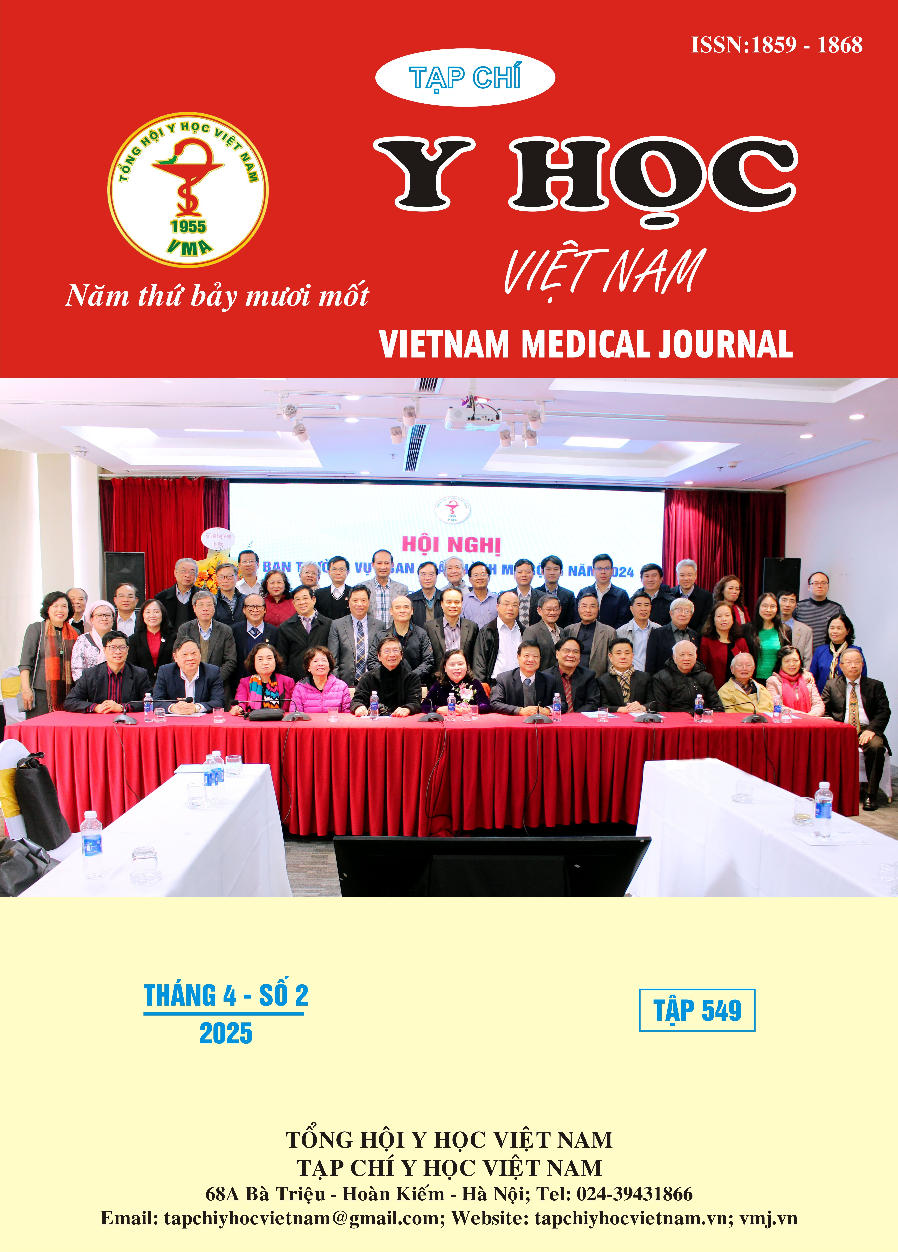BACTERIAL CHARACTERISTICS AND ANTIBIOTIC RESISTANCE OF GRAM-NEGATIVE BACTERIA CAUSING BILIARY TRACT INFECTIONS
Main Article Content
Abstract
Background: Biliary tract infections are common conditions associated with a high risk of hospitalization and severe complications, particularly due to the rising prevalence of antibiotic resistance among Gram-negative bacteria. Objectives: This study aimed to characterize the bacterial profiles and assess the antibiotic resistance patterns of Gram-negative bacteria causing biliary tract infections at Hanoi Medical University Hospital. Methods: Data were collected from 327 bile samples obtained between January 1, 2024, and December 31, 2024. Bile cultures were performed to isolate bacterial strains, and antibiotic susceptibility testing was conducted to evaluate resistance levels. Results: Among the 327 bile samples, the positive culture rate was 61.8%. Gram-negative bacteria accounted for 75.45% of isolates, with Escherichia coli (34.3%) being the most prevalent, followed by Enterococcus spp. (23.8%), Klebsiella pneumoniae (10.5%), and Pseudomonas aeruginosa (10.5%). A high proportion of ESBL-producing E. coli was observed (49.5%). E. coli exhibited substantial resistance to ampicillin (83.5%), ciprofloxacin, trimethoprim/sulbactam (60–70%), and cefotaxime (>50%). K. pneumoniae demonstrated resistance rates exceeding 50% to ciprofloxacin and trimethoprim/sulbactam, while P. aeruginosa retained high susceptibility to most conventional antibiotics. Conclusion: The findings highlight alarming antibiotic resistance among Gram-negative bacteria in biliary tract infections, particularly E. coli and K. pneumoniae. Close surveillance and evidence-based antimicrobial stewardship are critical to mitigating resistance and optimizing clinical outcomes.
Article Details
Keywords
Biliary tract infections, antibiotic resistance, ESBL, Escherichia coli, Klebsiella pneumoniae, Pseudomonas aeruginosae
References
2. Gomi H, Solomkin JS, Schlossberg D. et al. Tokyo Guidelines 2018: antimicrobial therapy for acute cholangitis and cholecystitis. J Hepatobiliary Pancreat Sci. 2018 Jan;25(1):3-16. doi: 10.1002/jhbp.518. Epub 2018 Jan 9.
3. Jean SS, Lu MC, Ho MW, Ko WC, Hsueh PR; SMART Taiwan Group. Non-susceptibilities to antibiotics against important Gram-negative bacteria, and imipenem-relebactam, meropenem-vaborbactam against carbapenem non-susceptible Enterobacterales and Pseudomonas aeruginosa isolates implicated in complicated intra-abdominal and urinary tract infections in Taiwan, 2019. Int J Antimicrob Agents. 2022 Mar;59(3):106521.
4. WHO. (2021). Global Antimicrobial Resistance and Use Surveillance System Report.
5. Nhu NTK, Lan NPH, Campbell JI, Parry CM, et al. Emergence of carbapenem-resistant Acinetobacter baumannii as the major cause of ventilator-associated pneumonia in intensive care unit patients at an infectious disease hospital in southern Vietnam. J Med Microbiol. 2014 Oct;63(Pt 10):1386-1394.
6. Doan, T. N. et al. (2021). High prevalence of ESBL-producing E. coli and Klebsiella in Vietnam: A multicenter study. Journal of Global Antimicrobial Resistance, 24, 321-328.
7. Humphries R, Bobenchik AM, Hindler JA, Schuetz AN. Overview of Changes to the Clinical and Laboratory Standards Institute Performance Standards for Antimicrobial Susceptibility Testing, M100, 31st Edition. J Clin Microbiol. 2021 Nov 18;59(12):e0021321.
8. Truong Thien Phu, Le Phuong Mai. (2022). Microbiological pattern in biliary tract infection at Cho Ray hospital in 2021. Journal of Vietnam Society for Infectious Diseases, 4(40-8), 7-13.
9. Karam, S. S., El-Towathy, A., & Rizk, A. (2021). Characterization of bacterial pathogens in patients with cholangitis and their antibiotic resistance patterns. Journal of Infection and Public Health, 14(3), 390-396.
10. Buanes, T., Moller, A. K., & Bjerve, E. (2021). Multi-drug-resistant Escherichia coli in patients with cholangitis: a study from a Norwegian hospital. Scandinavian Journal of Infectious Diseases, 53(5), 373-378.


